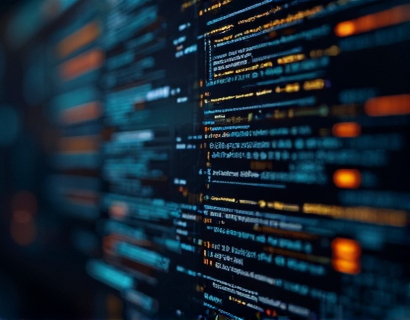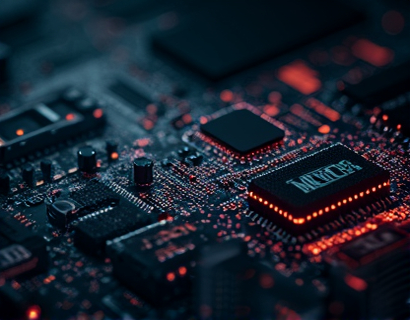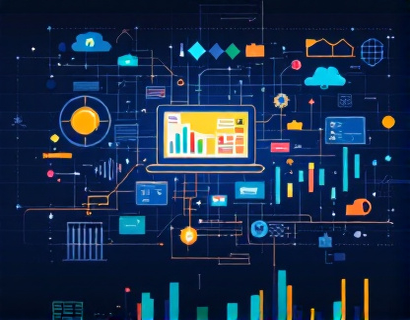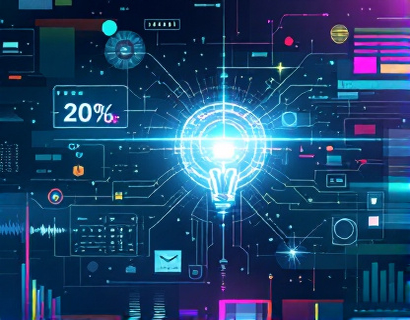Unlocking Blockchain Potential: Mastering Scalability and Security with Advanced Layer 2 Solutions for EVM-Enabled Development
In the rapidly evolving landscape of blockchain technology, scalability and security remain paramount challenges for developers aiming to create efficient and robust decentralized applications. The Ethereum Virtual Machine (EVM) has been a cornerstone for smart contract development, enabling a wide array of innovative applications. However, as the demand for decentralized applications (dApps) grows, the limitations of the EVM, particularly in terms of scalability and transaction throughput, have become increasingly evident. Advanced Layer 2 (L2) solutions offer a promising pathway to overcome these challenges, enhancing scalability, security, and efficiency. This article delves into the intricacies of L2 solutions, their benefits, and how they can transform EVM-based blockchain development.
Understanding Layer 2 Solutions
Layer 2 solutions refer to technologies and protocols built on top of existing blockchain layers to improve performance and reduce costs. Unlike Layer 1 (L1) solutions, which involve altering the core blockchain protocol, L2 solutions operate within the existing framework, addressing specific bottlenecks without compromising the security and decentralization of the underlying blockchain. For EVM-enabled development, L2 solutions provide a means to offload some of the computational and transactional burdens from the main chain, thereby enhancing overall system performance.
Key Benefits of Layer 2 Solutions
One of the most significant advantages of L2 solutions is their ability to significantly increase transaction throughput. By processing transactions off the main chain, L2 solutions can handle a much higher volume of transactions per second (TPS), which is crucial for dApps that require fast and seamless user experiences. This scalability is achieved without sacrificing security, as L2 solutions are designed to be tightly integrated with the EVM, ensuring that all transactions are eventually reflected on the main chain.
Another key benefit is cost efficiency. Transactions on the main chain can be prohibitively expensive, especially during periods of high network congestion. L2 solutions reduce gas fees by processing transactions off the main chain and only settling the final state on the EVM. This not only makes dApps more accessible to a broader user base but also encourages more developers to build on the blockchain, fostering a more vibrant ecosystem.
Types of Layer 2 Solutions
Several types of L2 solutions have emerged, each with its own set of features and use cases. Some of the most prominent include State Channels, Plasma, and Optimistic Rollups.
State Channels
State channels allow multiple parties to conduct a series of transactions off the main chain, with the final state being submitted to the EVM once the channel is closed. This method is particularly useful for applications that involve frequent, small transactions, such as gaming or micropayments. By keeping the bulk of transactions off the main chain, state channels minimize network congestion and reduce transaction costs.
Plasma
Plasma is a broader framework that includes various sub-layers, such as child chains and sidechains. In the context of EVM-enabled development, Plasma involves creating a hierarchy of chains that are anchored to the main EVM. Each child chain processes transactions independently, and only the final results are submitted to the main chain. This approach significantly increases scalability while maintaining security, as the main chain acts as a final arbiter.
Optimistic Rollups
Optimistic Rollups are a type of L2 solution that bundles multiple transactions into a single transaction on the main chain. The assumption is that all transactions within a rollup are valid, and any disputes are resolved through a challenge period. If no challenges are raised, the transaction is considered final. This method offers high throughput and low fees, making it ideal for dApps that require high transaction volumes.
Enhancing Security with Layer 2 Solutions
Security is a non-negotiable aspect of blockchain development, and L2 solutions are designed to maintain the highest security standards while improving scalability. One of the primary security features of L2 solutions is their deep integration with the EVM. All transactions processed through L2 mechanisms are eventually reflected on the main chain, ensuring that the final state is immutable and verifiable. This integration means that the security of the EVM is preserved, as any fraudulent activity would still be detectable and reversible on the main chain.
Additionally, L2 solutions often incorporate advanced cryptographic techniques to enhance security. For instance, optimistic rollups use cryptographic proofs to verify the validity of transactions during the challenge period. This approach ensures that only valid transactions are finalized, further bolstering the security of the system.
Improving Efficiency and Developer Experience
Beyond scalability and security, L2 solutions also focus on improving the overall efficiency of blockchain development. By offloading some of the computational load from the main chain, L2 solutions reduce the resource requirements for dApps, leading to faster deployment times and lower operational costs. This efficiency is particularly beneficial for developers building complex dApps that require high performance and low latency.
Moreover, the modular nature of L2 solutions allows developers to choose the most suitable mechanism for their specific use case. Whether it's state channels for frequent small transactions or rollups for high-volume dApps, the flexibility provided by L2 solutions empowers developers to optimize their applications for performance and cost.
Case Studies and Real-World Applications
Several projects have successfully leveraged L2 solutions to enhance their blockchain applications. For example, a gaming platform implemented state channels to enable seamless in-game transactions, significantly reducing latency and transaction costs. Another financial dApp utilized optimistic rollups to process a high volume of trades with minimal fees, attracting a larger user base and increasing liquidity.
These case studies demonstrate the practical benefits of L2 solutions in real-world scenarios, showcasing their potential to drive innovation and adoption in the blockchain space.
Future Prospects and Challenges
As the blockchain ecosystem continues to evolve, L2 solutions are poised to play a crucial role in addressing scalability and security challenges. However, there are still challenges to overcome, such as ensuring interoperability between different L2 solutions and maintaining user trust in off-chain transactions. Standardization efforts and community collaboration will be essential in overcoming these hurdles and fostering a more unified and robust L2 ecosystem.
Looking ahead, the integration of L2 solutions with emerging technologies like sharding and cross-chain interoperability holds great promise. These advancements will further enhance the scalability and versatility of blockchain networks, paving the way for a new generation of decentralized applications.
Conclusion
Advanced Layer 2 solutions offer a transformative approach to scaling and securing EVM-based blockchain development. By offloading transactions and computations from the main chain, L2 solutions enhance scalability, reduce costs, and maintain the highest security standards. As the demand for efficient and secure dApps continues to grow, embracing L2 solutions will be crucial for developers aiming to build the next generation of blockchain applications. The future of blockchain innovation is bright, with L2 solutions leading the charge towards a more scalable, secure, and efficient decentralized world.










































